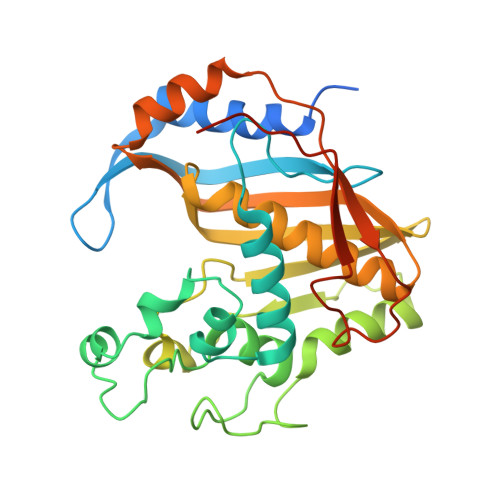Analysis of mRNA recognition by human thymidylate synthase.
Brunn, N.D., Dibrov, S.M., Kao, M.B., Ghassemian, M., Hermann, T.(2014) Biosci Rep 34: e00168-e00168
- PubMed: 25423174
- DOI: https://doi.org/10.1042/BSR20140137
- Primary Citation of Related Structures:
4GYH, 4H1I - PubMed Abstract:
Expression of hTS (human thymidylate synthase), a key enzyme in thymidine biosynthesis, is regulated on the translational level through a feedback mechanism that is rarely found in eukaryotes. At low substrate concentrations, the ligand-free enzyme binds to its own mRNA and stabilizes a hairpin structure that sequesters the start codon. When in complex with dUMP (2'-deoxyuridine-5'-monophosphate) and a THF (tetrahydrofolate) cofactor, the enzyme adopts a conformation that is unable to bind and repress expression of mRNA. Here, we have used a combination of X-ray crystallography, RNA mutagenesis and site-specific cross-linking studies to investigate the molecular recognition of TS mRNA by the hTS enzyme. The interacting mRNA region was narrowed to the start codon and immediately flanking sequences. In the hTS enzyme, a helix-loop-helix domain on the protein surface was identified as the putative RNA-binding site.
- *Department of Chemistry and Biochemistry, University of California, San Diego, 9500 Gilman Drive, La Jolla, CA 92093, U.S.A.
Organizational Affiliation:

















